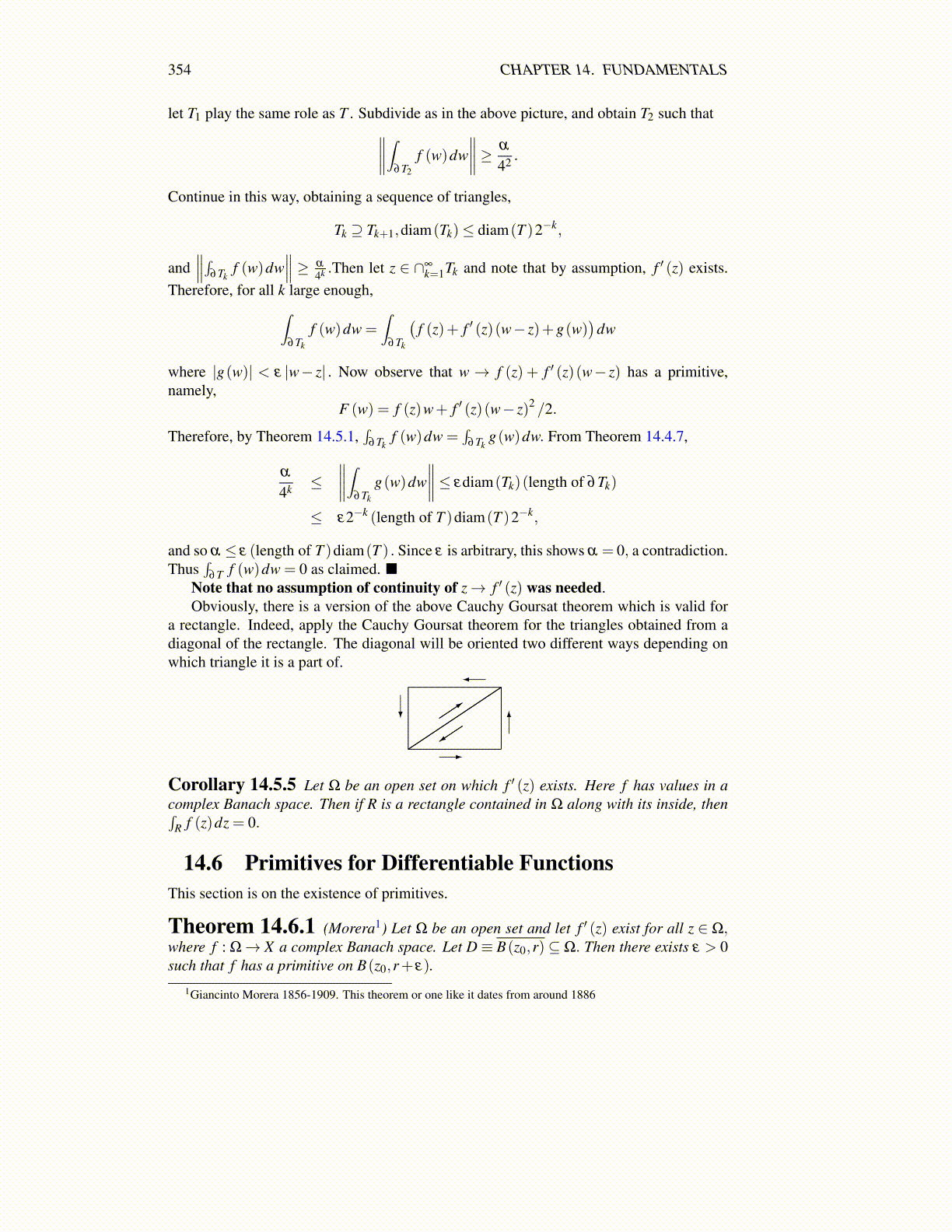
354 CHAPTER 14. FUNDAMENTALS
let T1 play the same role as T . Subdivide as in the above picture, and obtain T2 such that∥∥∥∥∫∂T2
f (w)dw∥∥∥∥≥ α
42 .
Continue in this way, obtaining a sequence of triangles,
Tk ⊇ Tk+1,diam(Tk)≤ diam(T )2−k,
and∥∥∥∫∂Tk
f (w)dw∥∥∥ ≥ α
4k .Then let z ∈ ∩∞k=1Tk and note that by assumption, f ′ (z) exists.
Therefore, for all k large enough,∫∂Tk
f (w)dw =∫
∂Tk
(f (z)+ f ′ (z)(w− z)+g(w)
)dw
where |g(w)| < ε |w− z| . Now observe that w → f (z) + f ′ (z)(w− z) has a primitive,namely,
F (w) = f (z)w+ f ′ (z)(w− z)2 /2.
Therefore, by Theorem 14.5.1,∫
∂Tkf (w)dw =
∫∂Tk
g(w)dw. From Theorem 14.4.7,
α
4k ≤∥∥∥∥∫
∂Tk
g(w)dw∥∥∥∥≤ εdiam(Tk)(length of ∂Tk)
≤ ε2−k (length of T )diam(T )2−k,
and so α ≤ ε (length of T )diam(T ) . Since ε is arbitrary, this shows α = 0, a contradiction.Thus
∫∂T f (w)dw = 0 as claimed. ■
Note that no assumption of continuity of z→ f ′ (z) was needed.Obviously, there is a version of the above Cauchy Goursat theorem which is valid for
a rectangle. Indeed, apply the Cauchy Goursat theorem for the triangles obtained from adiagonal of the rectangle. The diagonal will be oriented two different ways depending onwhich triangle it is a part of.
Corollary 14.5.5 Let Ω be an open set on which f ′ (z) exists. Here f has values in acomplex Banach space. Then if R is a rectangle contained in Ω along with its inside, then∫
R f (z)dz = 0.
14.6 Primitives for Differentiable FunctionsThis section is on the existence of primitives.
Theorem 14.6.1 (Morera1) Let Ω be an open set and let f ′ (z) exist for all z ∈ Ω,where f : Ω→ X a complex Banach space. Let D≡ B(z0,r)⊆Ω. Then there exists ε > 0such that f has a primitive on B(z0,r+ ε).
1Giancinto Morera 1856-1909. This theorem or one like it dates from around 1886